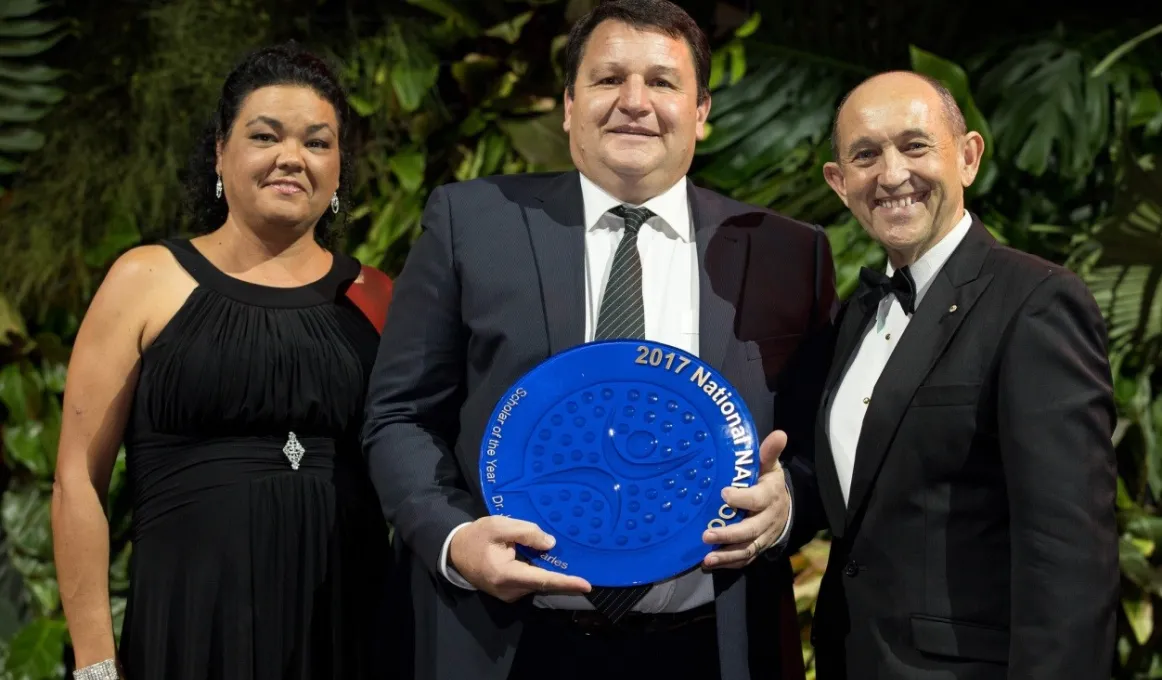Dr James Charles is the 2017 National NAIDOC Scholar of the Year

Dr James Charles is the 2017 National NAIDOC Scholar of the Year for his work on improving foot health in Aboriginal and Torres Strait Islander people.
“We often don’t think enough about foot health until it’s too late”, said podiatrist and 2017 National NAIDOC Scholar of the Year Dr James Charles, “and too often that leads to ulceration, amputation or other irreversible consequences.”
James, a Kaurna man from Adelaide and an academic at Charles Sturt University in Albury, wants to shine a light on the state of Aboriginal and Torres Strait Islander foot health and the need for culturally appropriate services.
“Feet are such an important part of our lives and we rely on them for mobility but people neglect them until there is a problem,” James said.
“And Aboriginal people, especially those in rural and remote communities, are more likely to have foot health problems than in the general population.”
James said that the foot biomechanics of Indigenous people is different to non-Indigenous people, resulting in problems for people, especially as they grow older and become less mobile. Smoking, which is more prevalent in the Aboriginal and Torres Strait Islander community, also contributes to foot health problems.
“Smoking and diabetes can both have detrimental effects on blood flow to the feet. People with long term diabetes can also develop neuropathy (nerve damage) in the feet,” James said.
“This can ultimately lead to ulceration, infection and amputation. So it’s important to identify at risk people and ensure they are treated as early as possible and regularly.”
James has been conducting research on Indigenous foot health and educating health students and professionals about the results of his research and teaching how to provide culturally appropriate foot health care.
“My research has found that Aboriginal people have high rates of equinus, a reduced movement at the ankle. This can contribute to athleticism, but can put more pressure on the forefoot, which can contribute to skin problems like callus and corn, which can lead to ulceration and amputation, especially as people get older and heavier,” James said.
“It is important to inform podiatrists and other health professionals about the biomechanical differences, as interventions can reduce complication for those at risk.”
James said that medical professionals also need to learn more about Aboriginal health and culture so they can communicate more effectively with their patients and encourage preventive healthcare.
“There needs to be a better understanding of Aboriginal foot health so that when people get a non-healing ulcer it won’t lead to amputation. Once you have an ulcer it is difficult to treat effectively and you can’t get your foot back once it has been amputated.”
Find out more
Visit the National NAIDOC website or Facebook page for more details about the event and award winners.